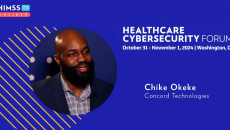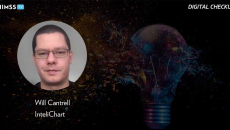Electronic Health Records (EHR, EMR)
The St. Louis pediatric hospital has fully integrated its in-house behavioral health team with vendor tele-psychiatrists – including in its Epic EHR. The percentage of new patients scheduled within 14 days has jumped from 14% to more than 60%.
He discusses the particular cybersecurity challenges for post-acute care settings, and previews a HIMSS25 session that will help IT leaders at nursing homes, home health and assisted living groups can improve their privacy and security postures.
The company says in a 46-page detailed argument that Epic sought to deliberately eliminate its ability to gain payer market share and "brazenly doubles and triples down on knowingly false statements about Particle in its motion."
Healthcare providers and IT vendors in the region have weighed in with their predictions for healthcare technology in the new year.
This past year was a busy one, with new policy changes, cybersecurity challenges, EHR optimization advancements, innovations in patient care and, yes, a whole lot of AI.
Cybersecurity In Focus
The agency seeks to make its first HIPAA Security Rule update since 2013 to clarify what health plans, healthcare clearinghouses, providers and their business associates must do to protect the security of electronic protected health information.
Chike Okeke, chief information security officer of data exchange company Concord, offers his perspective on the safe and secure transfer of protected health information.
A cyberattack on May 8 against healthcare giant Ascension resulted in the medical data of 5.
Will Cantrell, director of product solutions at InteliChart, suggests these processes are in need of modernization, and explains how integrating communication platforms with EHR systems can enhance workflow and reduce compliance risks.
The agency plans to roll out federal electronic health record systems at four Michigan facilities in mid-2026. Pre-deployment activities will kick off in the coming weeks.








